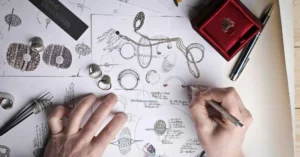The increasing growth of motorized vehicles does not only happen on cars in different marks and types, however it also happens on cars in the same type, but from different marks. For example Avanza & Xenia, Rush & Terios, Agya & Ayla, etc. Fortunately, all these cars are produced by Toyota and Daihatsu, besides, there are also many “similar but different” products from Nissan, Mazda, or Mitsubishi. Why did it happen? Are there piracy practices here?
According to the Intellectual Property Law (IP), the form of car design belongs to the realm of Industrial Design. Article 1 point 1 of Law Number 31 Year 2000 concerning Industrial Design (Industrial Design Law) provides the following definition of industrial design:
“Industrial design is a creation concerning the shape, configuration, or composition of lines or colours, or lines and colours, or a combination thereof in three or two-dimensional forms that give an aesthetic impression and can be realized in three-dimensional or two-dimensional patterns and can be used for produce a product, goods, industrial commodity, or handicraft. ”
Like other types of IP, industrial designs are transferable and licensed. Thus, the owner of an industrial design can transfer his / her rights or give permission to other parties to use his design through a license agreement. Related to the use of the same design for two different car marks, the use of someone else’s car design could potentially violate industrial design rights if the use is carried out without the permission of the registered design owner.
However, in the use of similar car designs, which we often see, we can be sure that they have obtained prior permission. In other words, there is a license and collaboration agreement made by those parties, by paying a certain amount of royalties to the registered design owner. For an Example is the Toyota Agya with Daihatsu Ayla. Both are cars that are present in the Low Cost Green Car (LCGC) segment. Even if we look at the practices that occur in the market, Toyota Agya has a higher selling price compared to the Daihatsu Ayla, it does not mean that Daihatsu as a designer always charges very high royalties, however it happens since they have a different market segmentation factors for the two cars.
Apart from granting permission to other parties, the use of the same design for two different marks can also be done by “bartering” technology, such as the Toyota RAV4 which was the inspiration for the Daihatsu Terios, which was later used by Toyota for the Rush. Therefore, the use of the same car design for different marks is carried out since there is an agreement between the two parties to produce and sell vehicles that are similar but not the same without violating the rights of the designer.
However, what if Partners has a registered product design that is being copied without permission? Am Badar & Am Badar have helped many clients to handle industrial design violation cases. Do not hesitate to contact us by email to marketing@ambadar.co.id if your registered design is violated by other parties, our experienced consultants will be happy to help you to find the best legal action which can be taken to solve your problem.
Post Views: 43






